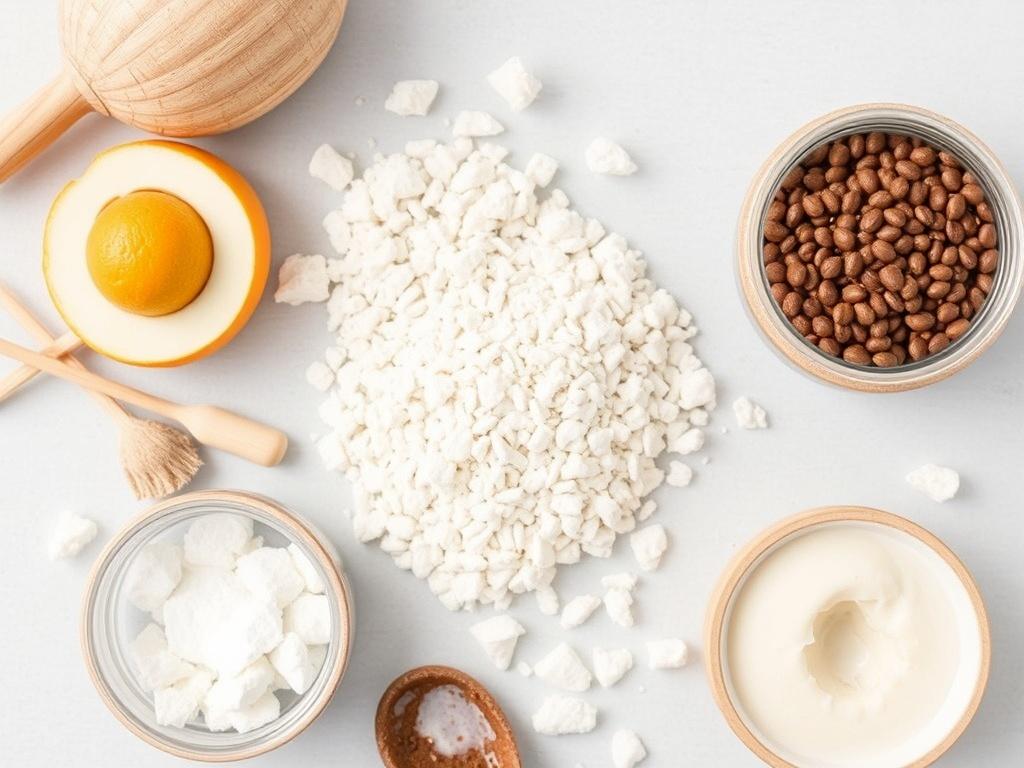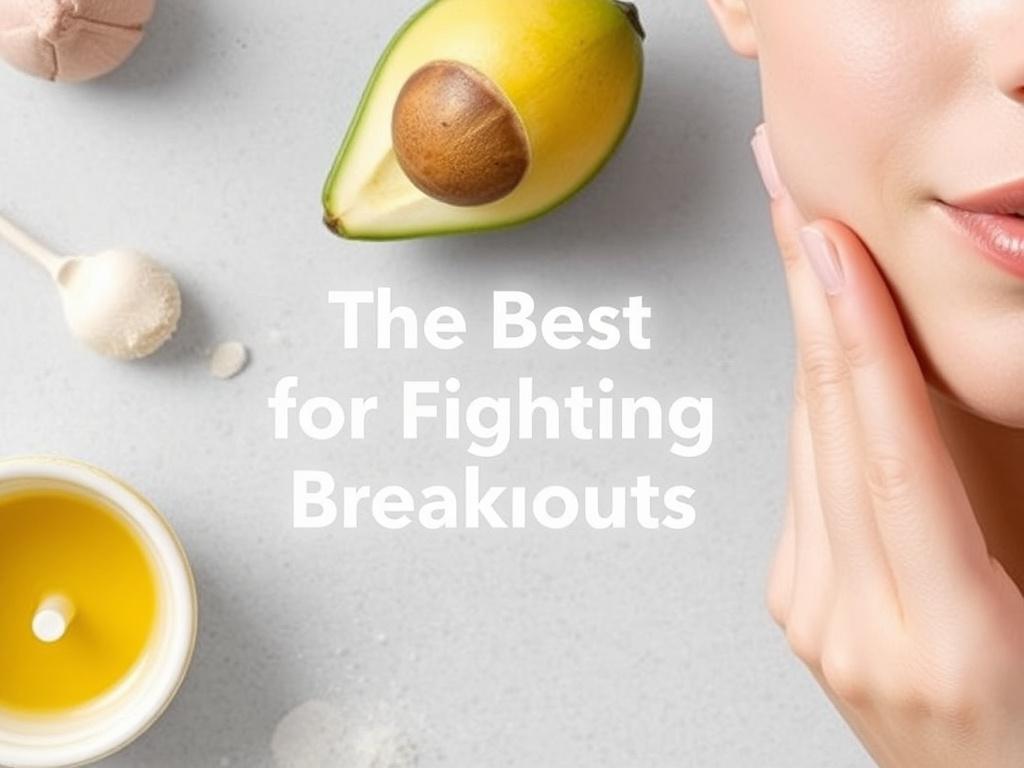Содержание статьи
- 1 Understanding Breakouts and Why Ingredients Matter
- 2 Top Acne-Fighting Ingredients and How They Work
- 2.1 1. Salicylic Acid: The Pore Unclogger
- 2.2 2. Benzoyl Peroxide: The Bacteria Fighter
- 2.3 3. Retinoids: The Skin Cell Turnover Champions
- 2.4 4. Niacinamide: The Inflammation Soother
- 2.5 5. Sulfur: The Traditional Acne Treatment
- 2.6 6. Alpha Hydroxy Acids (AHAs): The Surface Exfoliators
- 2.7 7. Tea Tree Oil: The Natural Antimicrobial
- 2.8 8. Clay: The Oil Absorber
- 3 How to Choose Ingredients Based on Your Skin Type
- 4 How to Safely Incorporate Acne-Fighting Ingredients
- 5 Natural vs. Synthetic Ingredients: What’s Best for Fighting Breakouts?
- 6 Common Myths About Ingredients for Fighting Breakouts
- 7 When to See a Dermatologist
Understanding Breakouts and Why Ingredients Matter

Acne breakouts can feel frustrating and persistent, affecting not only your skin but your confidence as well. Whether you’re dealing with occasional pimples or chronic acne, the solution often lies in the ingredients you use in your skincare routine. The best ingredients for fighting breakouts don’t just clear the surface of your skin; they dive deeper to reduce inflammation, unclog pores, and prevent future flare-ups. Understanding these ingredients and how they work can empower you to make informed choices and finally say goodbye to those stubborn blemishes.
Before we dive into the specifics, it’s essential to know that not all acne is the same. There are various types of breakouts, from whiteheads and blackheads to cystic acne, each requiring a tailored approach. The best skincare ingredients for fighting breakouts work by targeting the root causes, including excess oil production, bacteria buildup, dead skin cells blocking pores, and inflammation. Let’s explore the top ingredients clinicians and skincare experts trust to combat acne effectively.
Top Acne-Fighting Ingredients and How They Work
1. Salicylic Acid: The Pore Unclogger
Salicylic acid is one of the most well-known and widely used ingredients for fighting breakouts. A type of beta hydroxy acid (BHA), it penetrates deep into the pores to exfoliate dead skin cells and dissolve the oily plugs that cause blackheads and whiteheads. Its oil-soluble nature makes it especially effective for oily and acne-prone skin types.
Unlike harsher treatments that can cause excessive dryness, salicylic acid maintains the skin’s balance by gently exfoliating and calming inflammation. Regular use can reduce redness and prevent new breakouts from forming.
2. Benzoyl Peroxide: The Bacteria Fighter
Benzoyl peroxide is a powerhouse ingredient known for its ability to kill acne-causing bacteria on the skin’s surface. This ingredient not only treats existing pimples but also helps prevent new acne lesions by targeting Propionibacterium acnes, the bacteria responsible for many types of acne.
It is often found in cleansers, spot treatments, and creams in various concentrations. While benzoyl peroxide can sometimes cause dryness or irritation, starting with a lower concentration and gradually building tolerance is a smart way to integrate it into your routine.
3. Retinoids: The Skin Cell Turnover Champions
Retinoids, derivatives of vitamin A, are among the best ingredients for fighting breakouts due to their powerful effects on skin renewal. They promote faster cell turnover, helping to shed dead skin cells that clog pores and contribute to acne. Retinoids also prevent the formation of comedones (blackheads and whiteheads) and reduce the appearance of acne scars over time.
Prescription retinoids are especially potent, but over-the-counter options like retinol also provide anti-acne benefits with fewer side effects. Because retinoids can make your skin more sensitive to sunlight, pairing them with sunscreen is essential.
4. Niacinamide: The Inflammation Soother
Niacinamide, a form of vitamin B3, is renowned for its calming and anti-inflammatory properties. Acne often comes with redness and swelling, and niacinamide helps reduce these symptoms, making breakouts less noticeable and painful.
Additionally, niacinamide regulates sebum production, which helps decrease the oily buildup that leads to clogged pores. It also strengthens the skin’s barrier, improving overall skin health and resilience against irritants.
5. Sulfur: The Traditional Acne Treatment
Sulfur has been used in skincare for centuries and remains an effective ingredient for acne-prone skin. It works by absorbing excess oil from the skin and exfoliating dead cells that block pores. Sulfur’s antibacterial properties also help reduce acne-causing bacteria and soothe inflamed skin.
Due to its sometimes strong smell and drying effects, sulfur is typically found in masks, spot treatments, and cleansers designed for oily or combination skin.
6. Alpha Hydroxy Acids (AHAs): The Surface Exfoliators
AHAs like glycolic acid and lactic acid exfoliate the skin’s surface, promoting the shedding of dead skin cells and improving overall texture. They help fade post-acne marks and prevent clogged pores by keeping the skin smooth and refreshed.
These water-soluble ingredients are especially beneficial for those with dry or sensitive skin types, complementing the deeper pore-clearing action of BHAs.
7. Tea Tree Oil: The Natural Antimicrobial
Tea tree oil is a natural essential oil with potent antimicrobial and anti-inflammatory properties. It helps reduce the bacteria responsible for acne while calming redness and swelling.
Many people seek out tea tree oil as a gentler alternative to benzoyl peroxide, often using it as a spot treatment or in diluted form within cleansers and moisturizers for blemish-prone skin.
8. Clay: The Oil Absorber
Natural clays like bentonite and kaolin are fantastic ingredients for fighting breakouts, particularly for those with oily skin. Clays work by absorbing excess sebum and impurities from the pores, leaving skin feeling clean and refreshed.
Clay masks provide a deep cleansing effect, helping to detoxify the skin and reduce the frequency of breakouts when used regularly.
How to Choose Ingredients Based on Your Skin Type

Choosing the best ingredients for fighting breakouts often depends on your skin type, sensitivity, and the severity of your acne. Here’s a handy guide to help you match these ingredients to your unique skin needs:
| Skin Type | Recommended Ingredients | Notes |
|---|---|---|
| Oily Skin | Salicylic Acid, Benzoyl Peroxide, Clay, Niacinamide | Focus on oil control and deep pore cleansing. |
| Dry or Sensitive Skin | Alpha Hydroxy Acids, Niacinamide, Tea Tree Oil (diluted), Low Concentration Retinoids | Use gentle exfoliation and anti-inflammatory ingredients. |
| Combination Skin | Salicylic Acid, Niacinamide, Clay, AHAs | Balance oily zones with dry patches carefully. |
| Severe Acne (Cystic or Nodular) | Prescription Retinoids, Benzoyl Peroxide, Consult Dermatologist | Often requires professional guidance for effective treatment. |
How to Safely Incorporate Acne-Fighting Ingredients
Knowing the best ingredients for fighting breakouts is only the first step. To maximize their benefits while minimizing irritation, it’s important to introduce them carefully into your skincare routine. Start by using one active ingredient at a time, allowing your skin to adjust over several weeks before adding another. For example, you might begin with a gentle salicylic acid cleanser, then introduce niacinamide serum, followed by a retinoid at night.
Always patch-test new products to avoid adverse reactions. If using retinoids or AHAs, apply sunscreen religiously, as these ingredients can increase sensitivity to sunlight. Hydrate your skin well to counterbalance the potential dryness from acne treatments.
Sample Routine for Fighting Breakouts
- Morning: Cleanse with a gentle salicylic acid cleanser, apply niacinamide serum, moisturizer, and broad-spectrum sunscreen.
- Evening: Cleanse with a gentle cleanser, apply a retinoid or benzoyl peroxide treatment, then moisturize.
- Weekly: Use a clay mask or AHA exfoliant 1-2 times to help clear pores and renew skin.
Natural vs. Synthetic Ingredients: What’s Best for Fighting Breakouts?
The skincare world is split between natural and synthetic ingredients, each offering unique advantages in the fight against acne. Synthetic ingredients like benzoyl peroxide and retinoids have strong clinical backing and proven effectiveness. They tend to work faster but may come with side effects such as dryness or irritation.
On the other hand, natural alternatives like tea tree oil and clay provide gentler options with antimicrobial and oil-absorbing properties. They are often preferred by those with sensitive skin or those looking for more holistic skincare solutions. Many modern formulas combine both approaches, offering balanced products to soothe skin and combat breakouts effectively.
Common Myths About Ingredients for Fighting Breakouts

Let’s bust some common myths that can cause confusion when selecting acne-fighting ingredients:
- Myth: You should dry out your skin completely to stop acne.
Fact: Over-drying can irritate skin and worsen breakouts. It’s better to balance oil control with hydration. - Myth: Natural ingredients always work better.
Fact: Effectiveness depends on the ingredient and formulation, not just natural origin. - Myth: Using more products means faster results.
Fact: Overloading skin with actives can cause irritation and setbacks. - Myth: Acne treatments work overnight.
Fact: Consistency is key, and visible results often take weeks to appear.
When to See a Dermatologist
If you find that over-the-counter ingredients aren’t helping your breakouts or your acne is severe, painful, or leaves scars, it’s time to consult a dermatologist. They can prescribe more potent treatments, including oral medications like antibiotics or hormonal therapy, and provide personalized advice on the best ingredients for fighting breakouts in your unique case.
A professional can also help manage side effects and adjust your routine for maximum benefit and safety.
Conclusion
Fighting breakouts successfully involves understanding the best ingredients that target acne’s root causes—excess oil, clogged pores, inflammation, and bacteria. Salicylic acid, benzoyl peroxide, retinoids, niacinamide, sulfur, AHAs, tea tree oil, and clay each offer unique benefits that, when chosen based on your skin type and incorporated carefully, can transform your complexion. Remember, consistency and patience are essential, as clear skin doesn’t happen overnight. By selecting the right ingredients, tailoring your routine, and knowing when to seek professional help, you’re well on your way to conquering breakouts and enjoying healthy, radiant skin.


